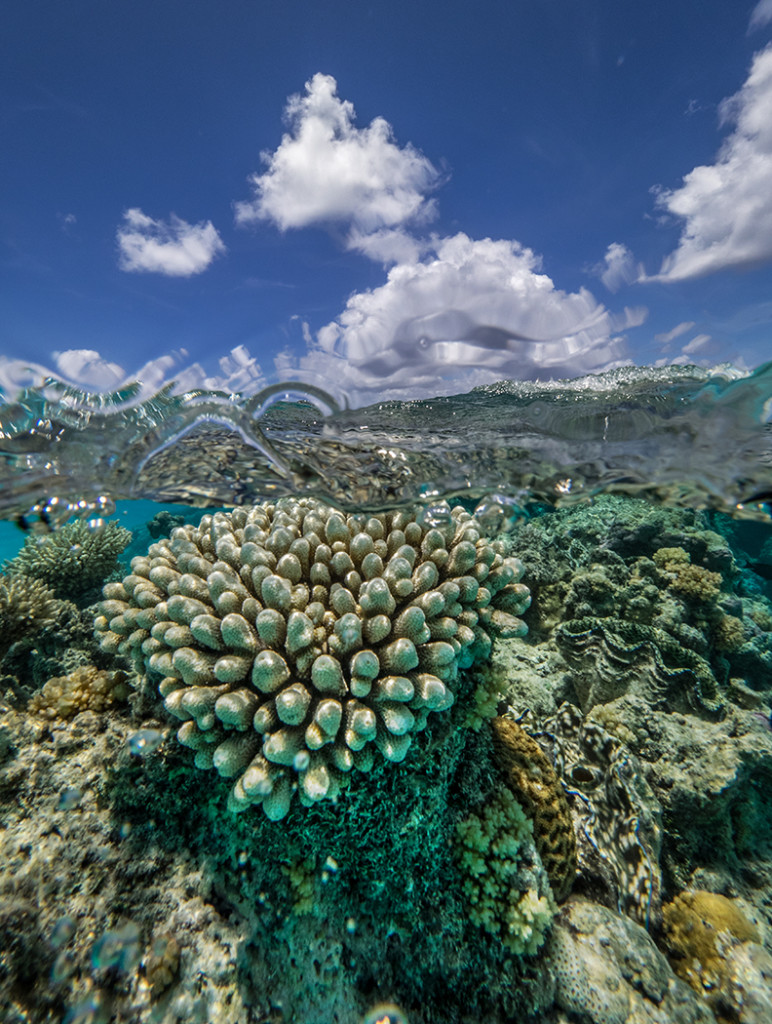Fiji/Cook Islands/Tahiti and South Pacific
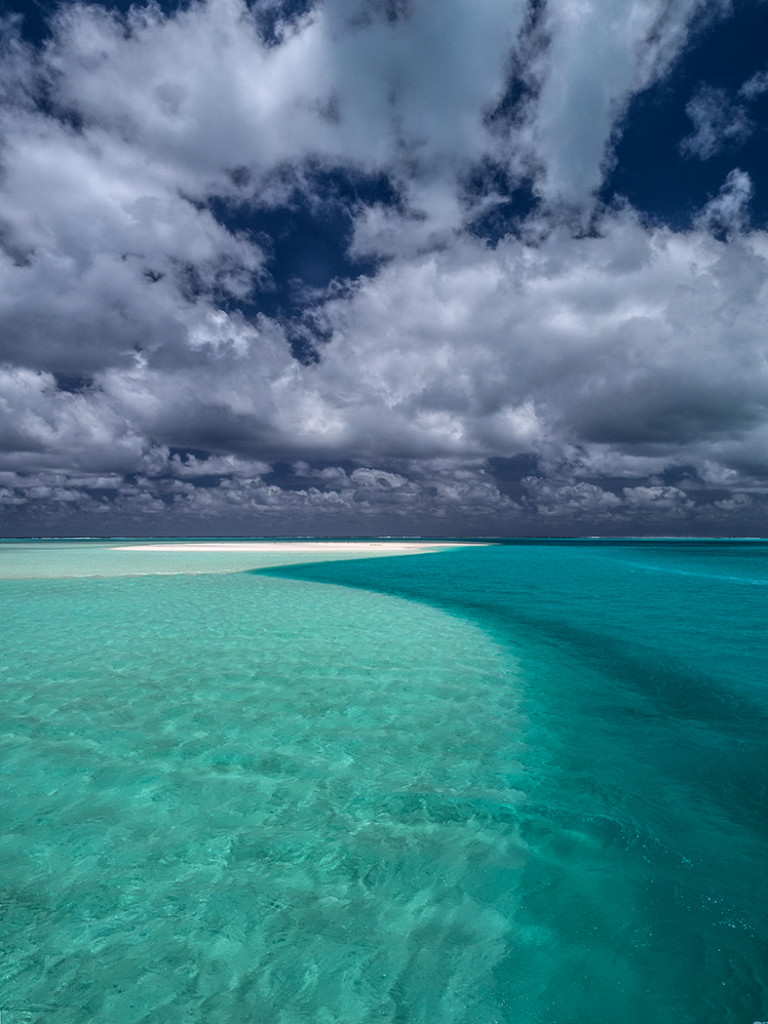
Aitutaki atoll Olympus E-M1 12-40mm Pro lens
I recently returned from two incredible National Geographic Expeditions: “Fiji to the Cook Islands: Polynesian Discovery,” and “Cook Islands to Tahiti: Pristine Reefs of the South Pacific.” We were in some of the most remote waters on earth, on the National Geographic Orion. I’ve spent some time in this area, but not an extensive assignment..what a blast.
Starting in Nadi, Fiji, we headed out for a couple of sea days, as the distances are so large in the South Pacific, Nadi was the closest airport and port for our entrance into this part of the world. Tonga, Niue, the Cook Islands were all part of the first itinerary.
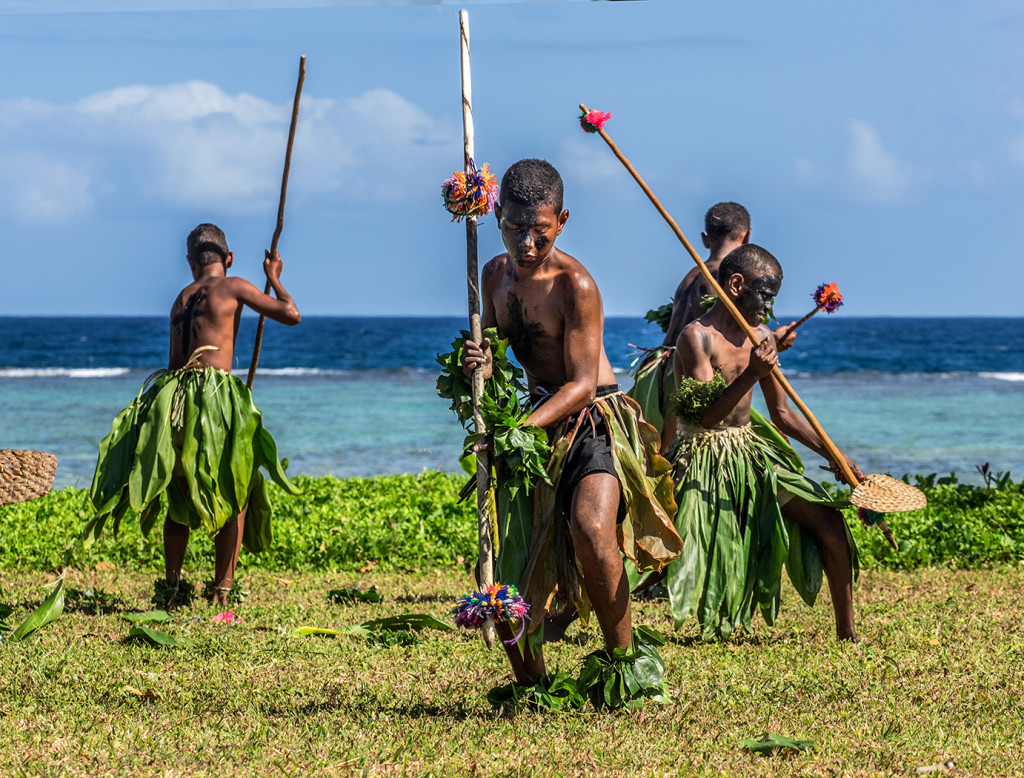
Young warriors practice on Fiji Island of Taveuni Olympus E-M1 40-150 Pro lens
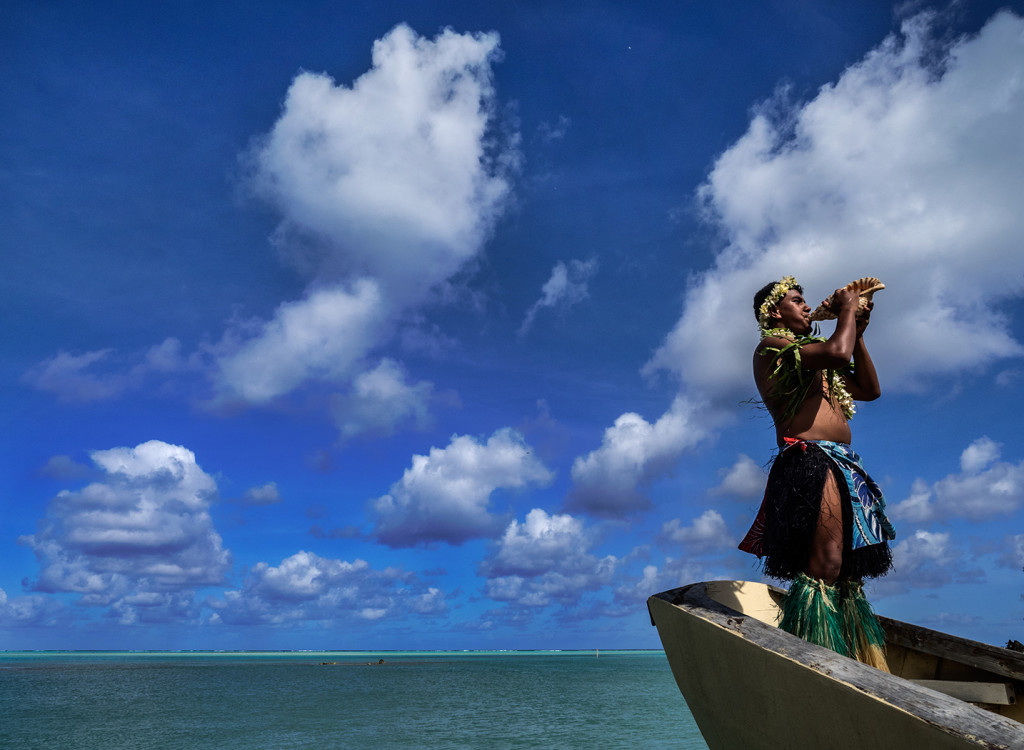
Local greeter on Aitutaki atoll Olympus E-M1 12-40mm Pro lens
Taveuni was a first stop, a morning spent on-shore on this, Fiji’s third largest island, known as “The Garden Island” for it’s rich and diverse vegetation.
From there, on to the Kingdom of Tonga, and Neiafu, the capital of the Vava’u island group.
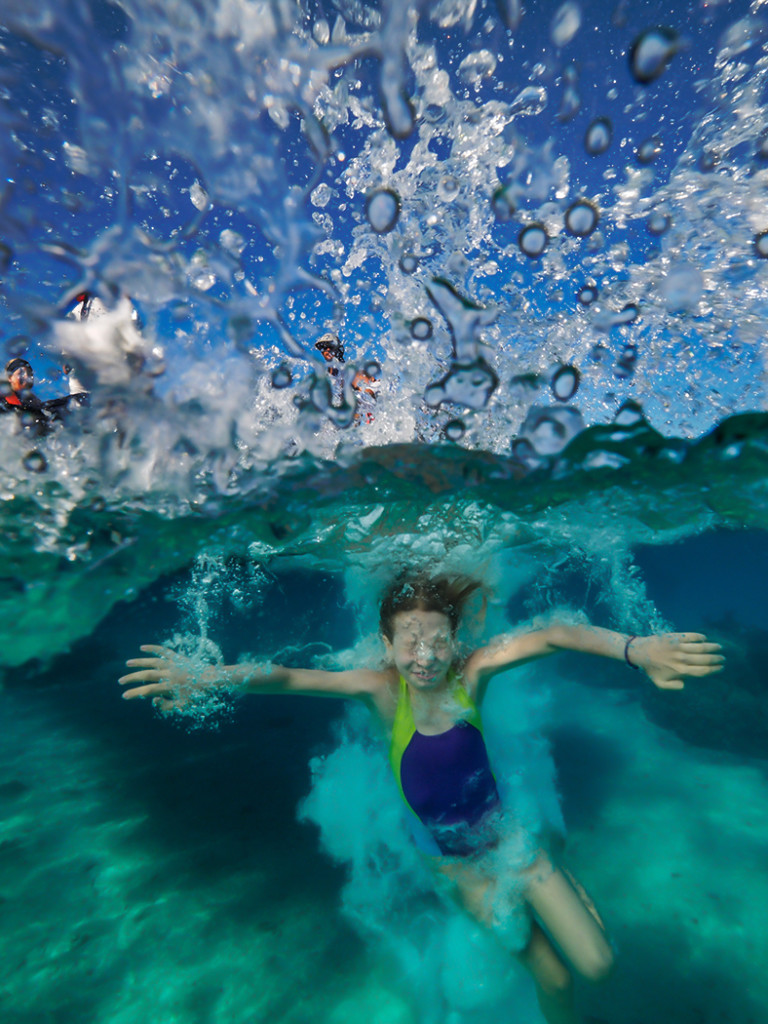
Near Vava’u, Tonga, swimmer jumps in waters Olympus E-M1 7-14mm Pro lens UW housing
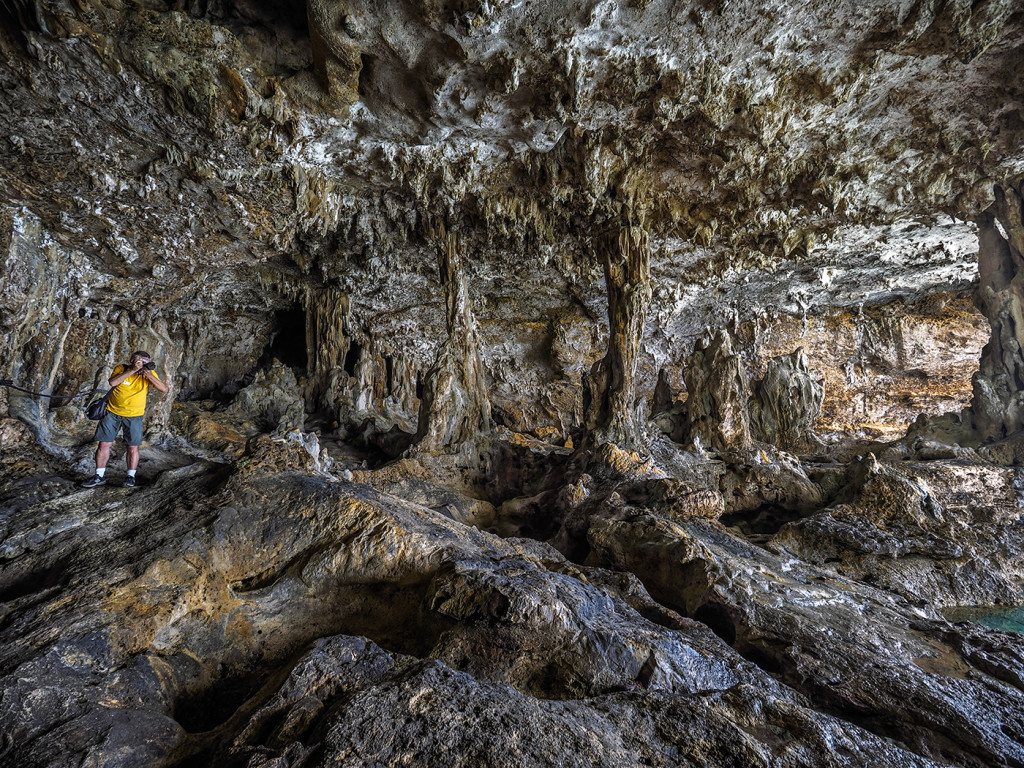
Sea caves on Nieu Olympus E-M1 7-14mm Pro lens
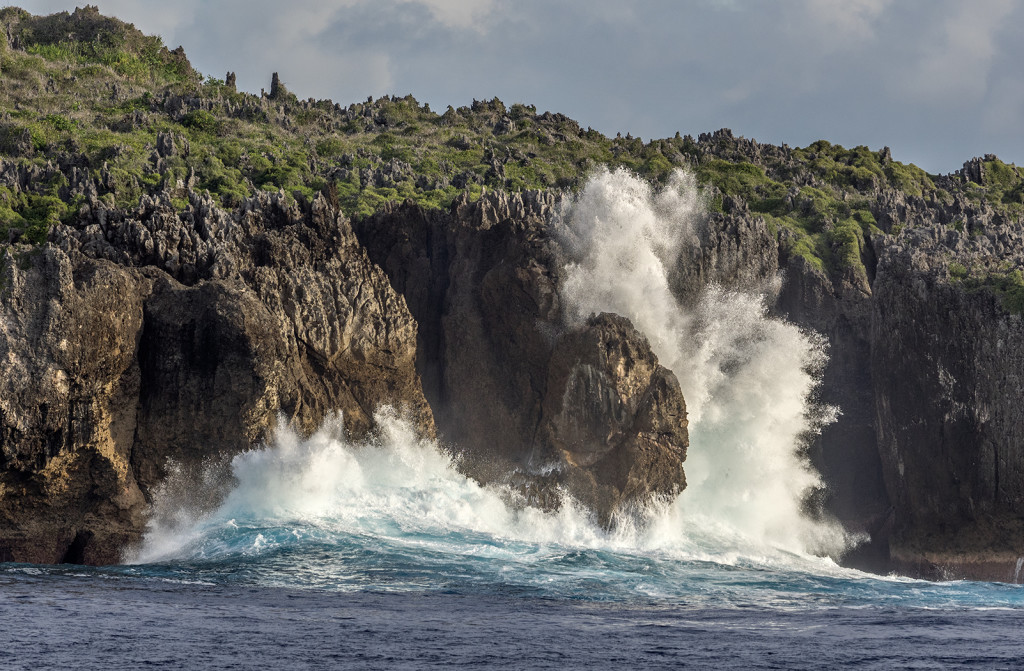
More sea days and large distances took us to the very interesting island of Niue and it’s famous (infamous??) banded sea kraits (snake.) Snorkeling here was great, wonderful visibility and an abundance of the sea snakes. First one you see, it does get the adrenaline going when you are in the water with the critter a couple of feet from you. They are quite venomous, about 10X the toxicity of a cobra, but very non-aggressive. I saw dozens of these beautiful creatures swim from the bottom (20-50’ deep) to the surface to breath, leisurely looking around to check out the surroundings. If you got too close, the krait would do a mad dash to depth. I saw the one in this photo surface so I swam up to it from behind…the front of my housing bumping into the snake…causing it to freak-out and dive madly to the bottom. The tail-flip was great to see. I did wonder about something: I was told that this particular krait, the Niuean krait, was passive, but not to “tick it off.” While swimming with these, I started trying to define what “ticked-off” a krait?
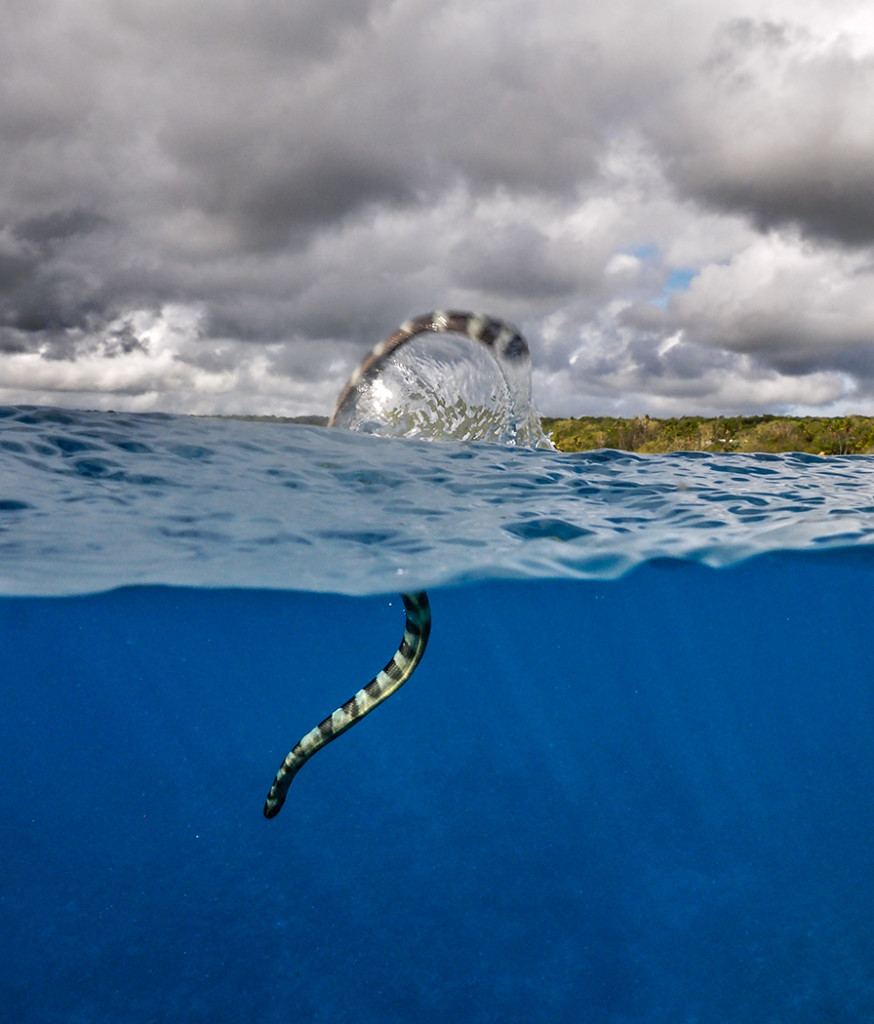
Off island of Nieu, a banded sea krait surprised by me & my camera Olympus E-M1 7-14mm Pro lens UW Housing
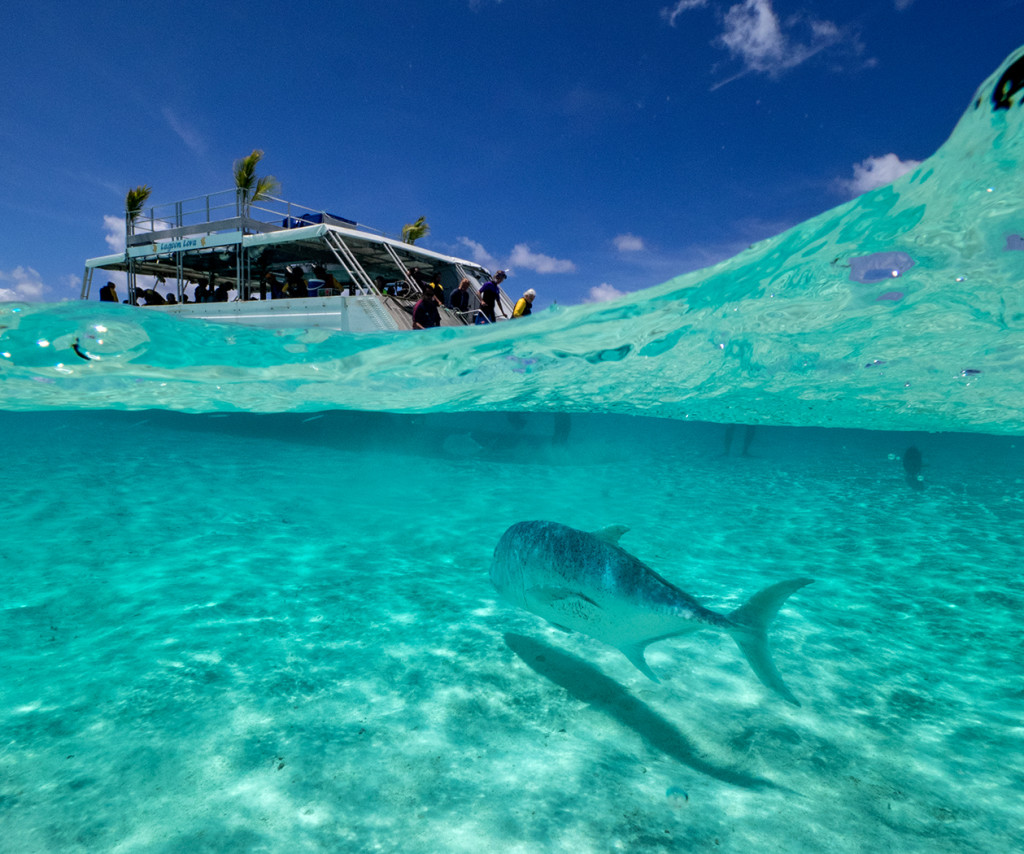
Aitutaki, Cook Islands. a giant trevally swims under boat Olympus E-M1 7-14mm Pro lens UW housing
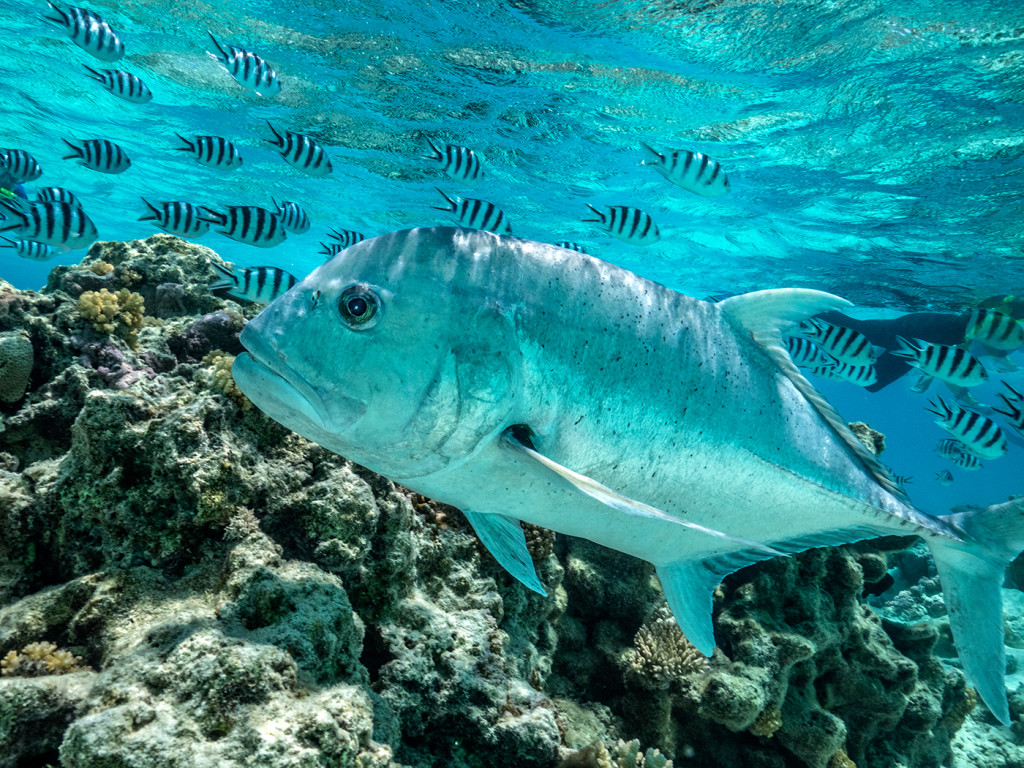
Aitutaki, Cook Islands.in the lagoon, a giant trevally amongst other fish Oly E-M1 7-14mm Pro lens UW Housing
This was a wonderful trip, a wonderful time to get back into the ocean. Very fond memories as I sit here in Denver (some snow on the ground) remembering those clear, warm-waters of the South Pacific.
Photo tip: Many manufacturers make very nice point and shoot cameras that are waterproof to a limited depth. Olympus’ entry into this field is the Olympus Tough (TG-4) This is a very powerful and compact camera that is capable of submerging to depths of 50 feet, which is more than enough for snorkeling, or diving into that world where the colors are the most intense. When diving deeper, you start “losing” red in your photographs, as that color is filtered out of the visible spectrum the deeper you dive. Plus, this powerful camera is also capable of shooting RAW files.
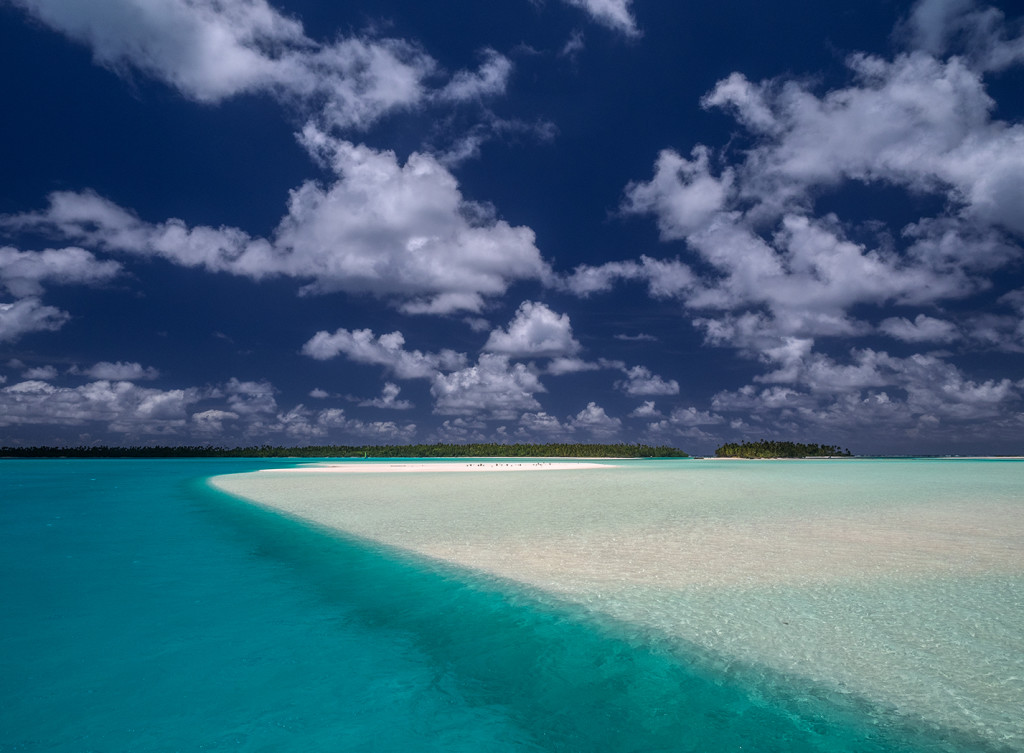
lagoon on Aitutaki Atoll Olympus E-M1 12-40mm Pro lens
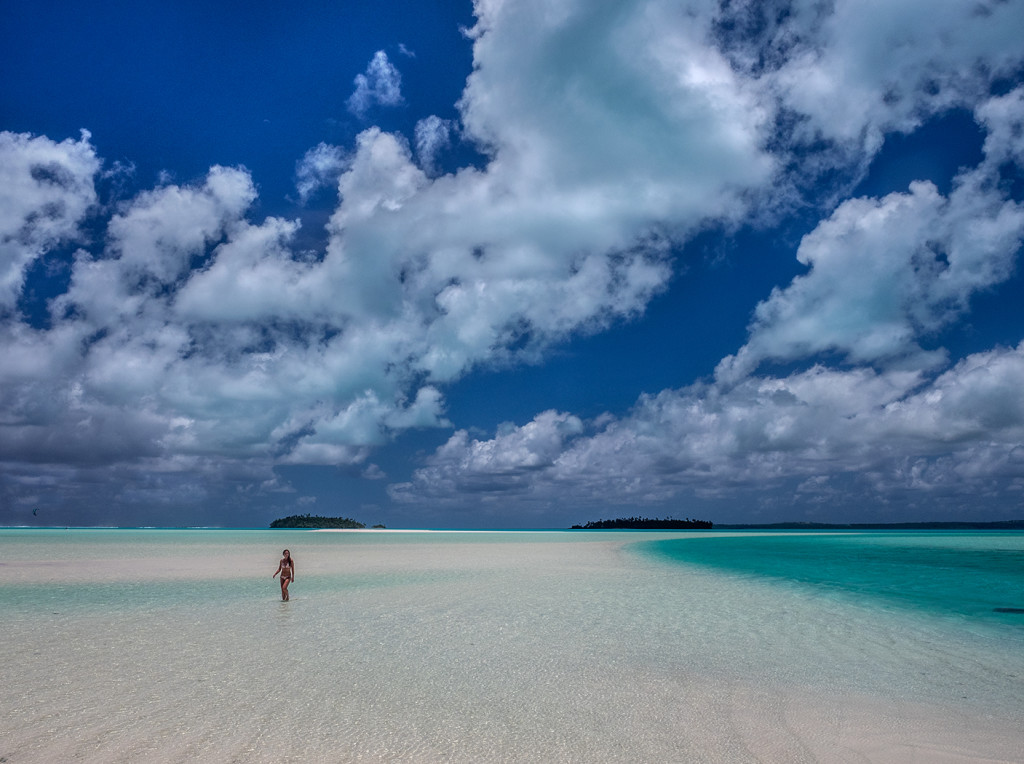
Lagoon on Aitutaki Atoll Olympus E-M1 12-40mm Pro lens
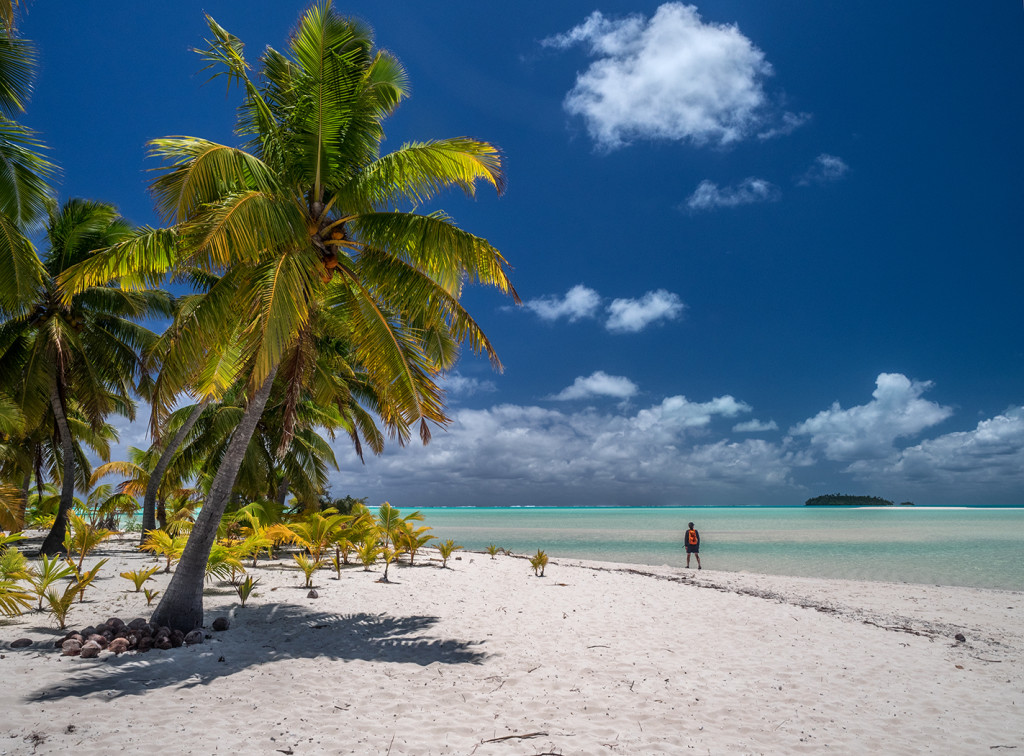
Aitutaki Atoll Olympus E-M1 12-40mm lens
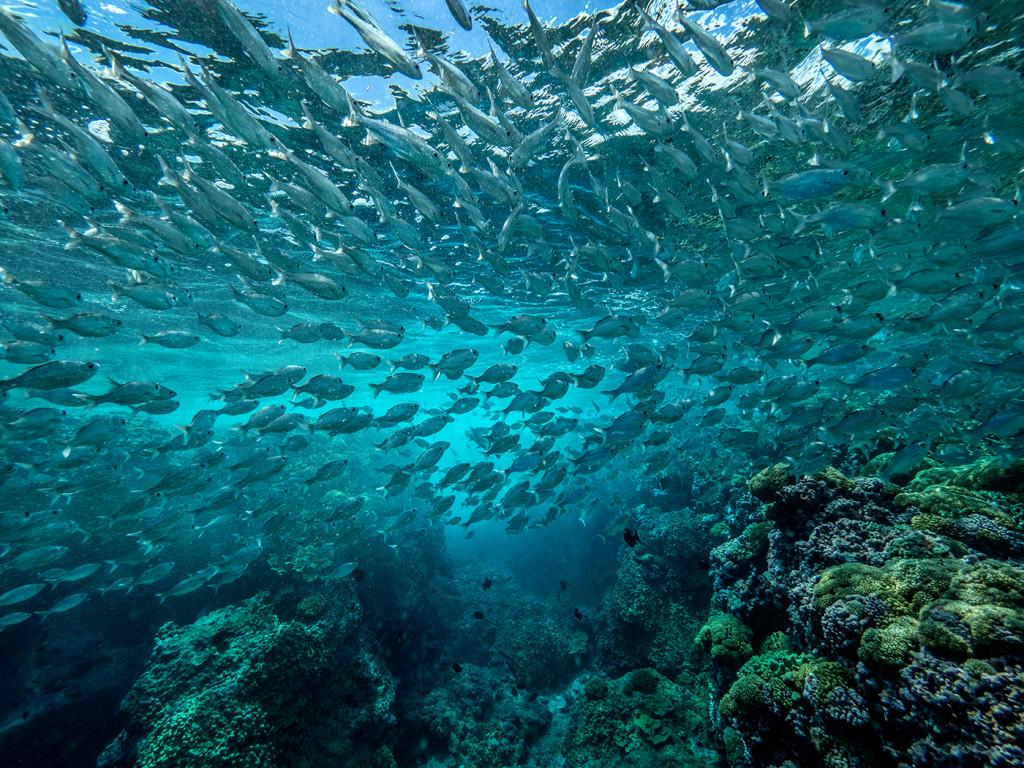
Millennium Atoll, fringing reef, school of fish Olympus E-M1 7-14 pro lens UW Housing
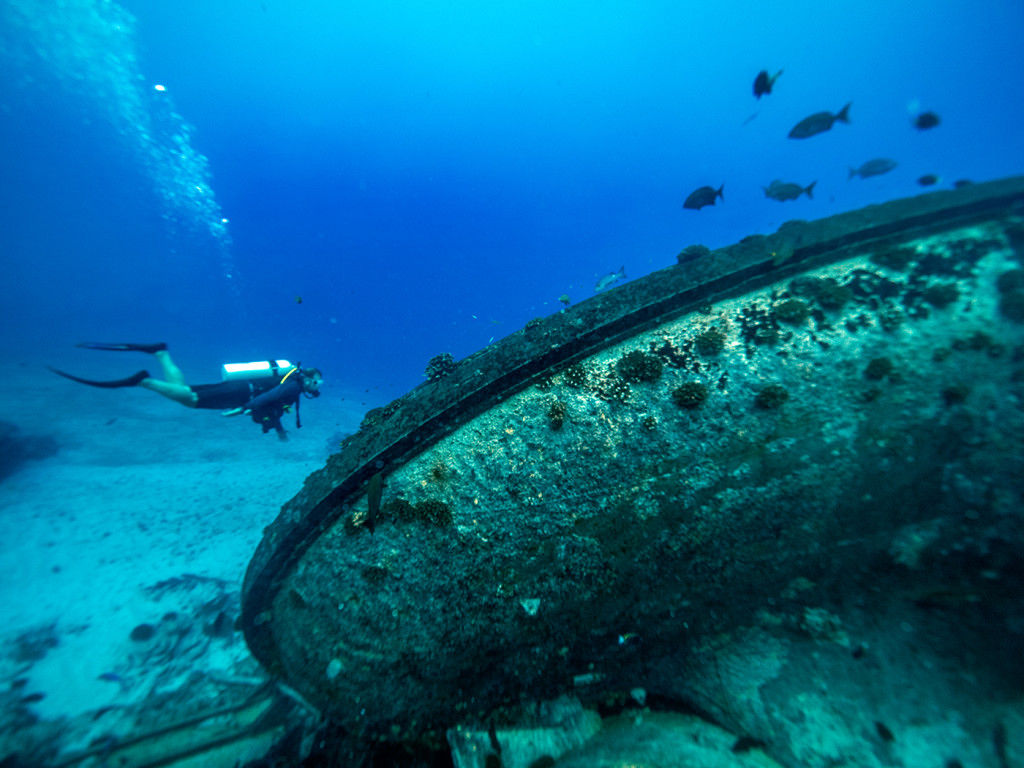
Diving on sunken ship on Millennium Atoll Olympus E-M1 7-14mm Pro lens
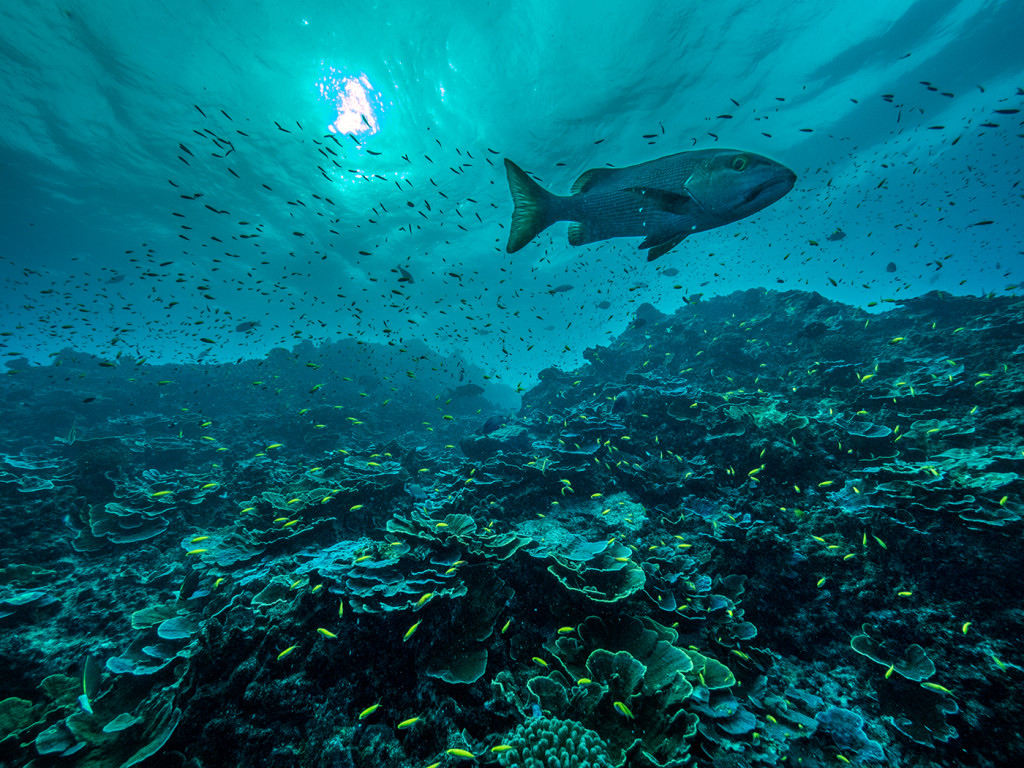
Diving on Millennium Atoll Olympus E-M1 7-14mm Pro lens UW Housing
When photographing underwater, a few rules to follow:
- Before I approach the water, I ALWAYS check out the gaskets and integrity of my camera, making sure there are no grains of sand, small hairs, anything on the rubber O-rings that are found on any and all underwater (UW) photographic equipment. This simple and important step is critical for the UW photographer. Usually a small tube of O-ring lubricant comes with the camera, or can be found at your local camera or dive shop. Keeping those O-rings clean and lightly lubricated is critical. An obvious step that I’ve seen divers/snorkelers get caught on, not having batteries charged or fresh card in camera. You’ve got to be REALLY fast to open a housing, change a card, and close it before flooding!!
- Whether using the TG-4 or my full housing, as soon as I get into the water I check for leaks. If snorkeling with TG-4, I’ll just go into water with camera held up out of the water, put on my mask and get comfortable, then slowly move the camera below the surface. My task here is to watch for any bubbles coming out of my camera or housing. I’m not looking around at the fish or reef (well, I may be looking for the kraits, but that’s not usual snorkeling for most!) instead I’m immediately checking my equipment for any chance of leakage. Salt water is highly destructive to camera gear, so this move is critical. If it’s my full UW housing, I’ll ask someone to (carefully) hold my camera as I make my entrance into the water. Whether snorkeling or diving, I do the same drill of checking the gear out for that tell-tale sign of problems, bubbles coming out of the camera/housing. If this occurs, time to get out and address that problem.
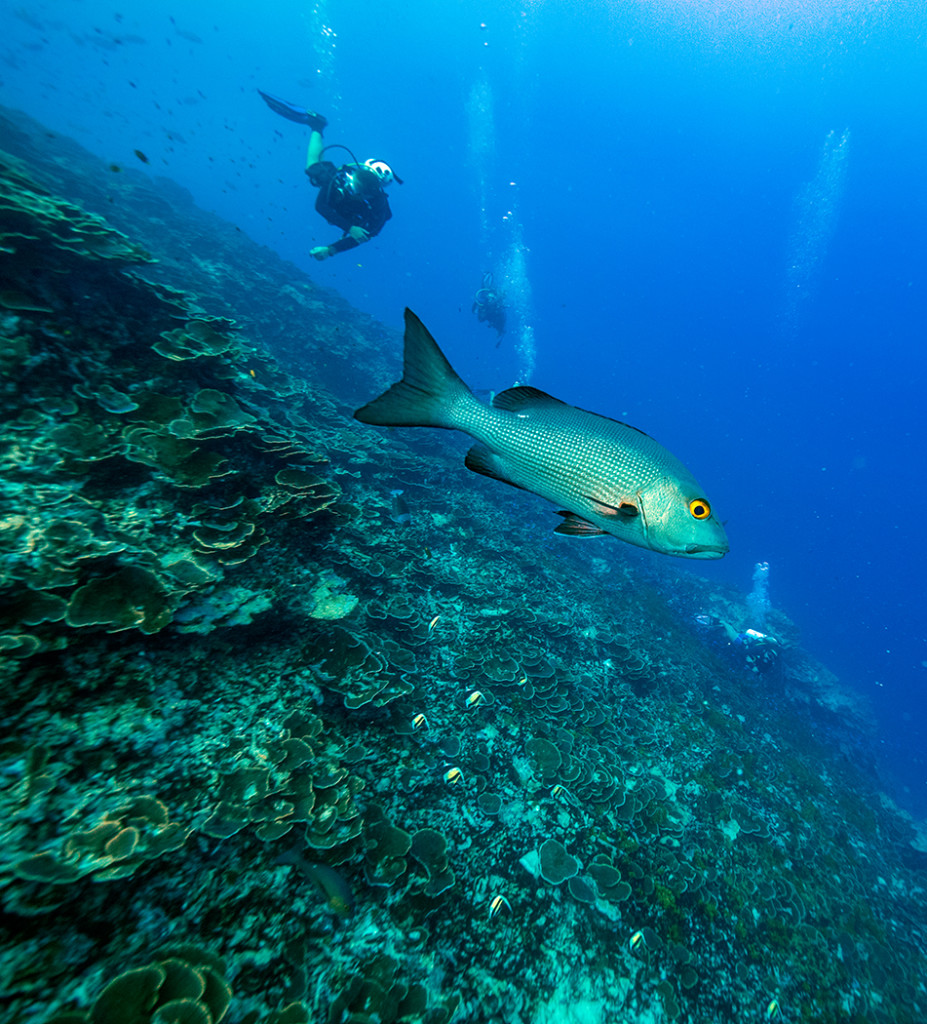
Diving on Millennium Atoll Olympus E-M1 7-14mm Pro lens UW Housing
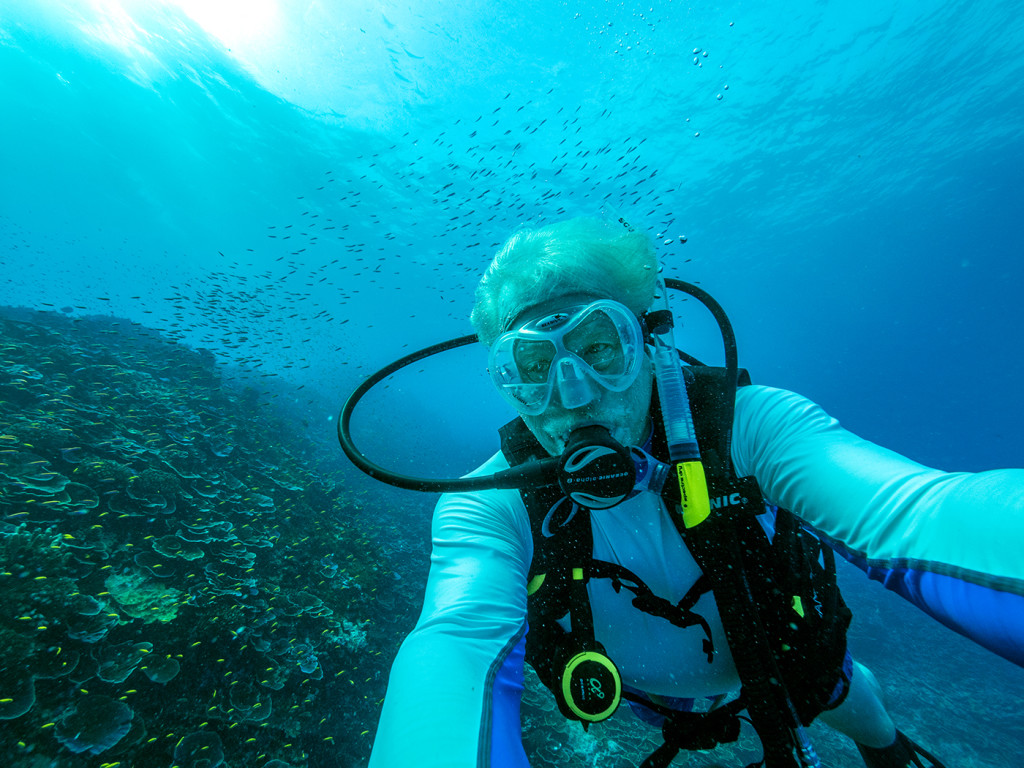
Millennium Atoll selfie Olympus E-M1 7-14mm Pro lens UW Housing
- Once in, the fun starts. I have all my settings in mind, and usually set on the camera…which often includes setting the camera in “burst” mode, so you capture those fast moving residents of the sea. In addition to that, if not shooting with a flash, I’ll set the ISO a high enough to provide a shutter speed of 1/500th, so I can stop that motion. In shallower waters my ISO is set high enough so I am shooting at an aperture that is in the f8-f11 range, providing enough depth of field (dof) so my sharpness is deep.
- If your camera struggles with AF underwater, you might consider putting it in manual focus. Then, set the focus at a good hyper focal distance: with my 7-14mm (which is equivalent of the field of view of a 14-28mm in 35mm format) I’ll set it at a manual focus distance of about 2 ½ feet. At this distance, and with that aperture in the range of f8 – f11, my dof is from about a foot in front of the lens to infinity. When something fast happens in front of me, say the sea lions cavorting directly in front of the camera in the Galapagos, the camera will fire immediately when I press the shutter, and my sharp focus is accomplished.
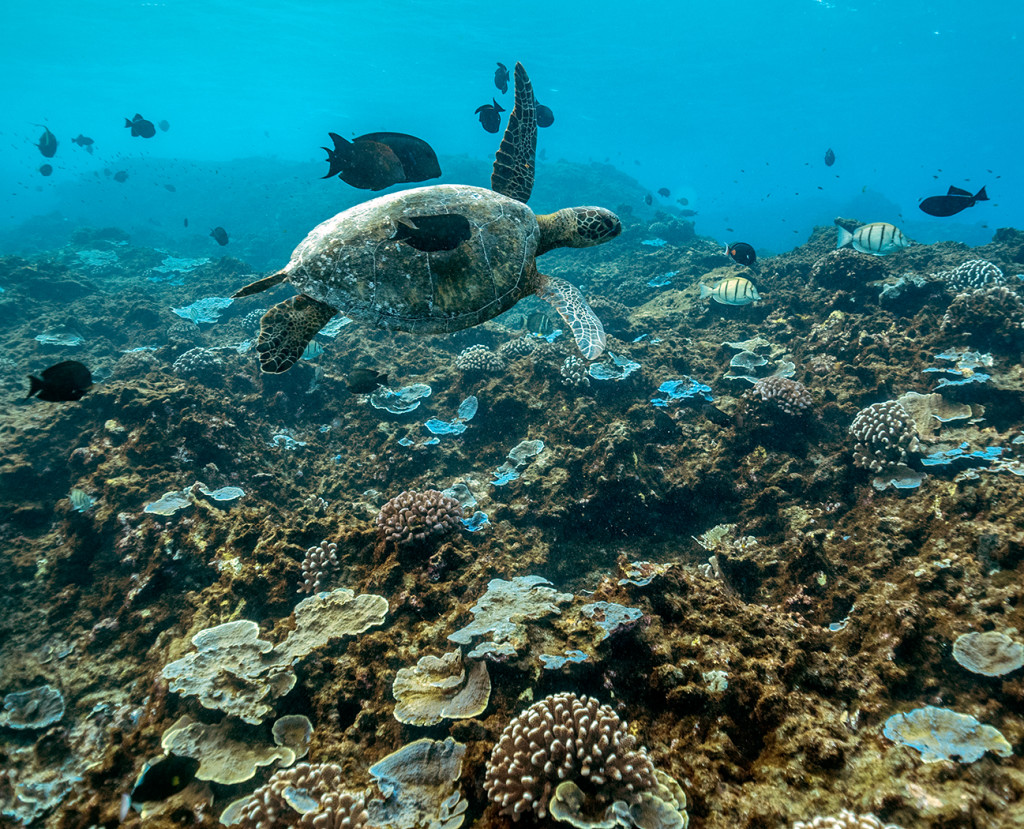
Sea turtle at cleaning station, Millennium Atoll Olympus E-M1 7-14mm Pro lens UW Housing
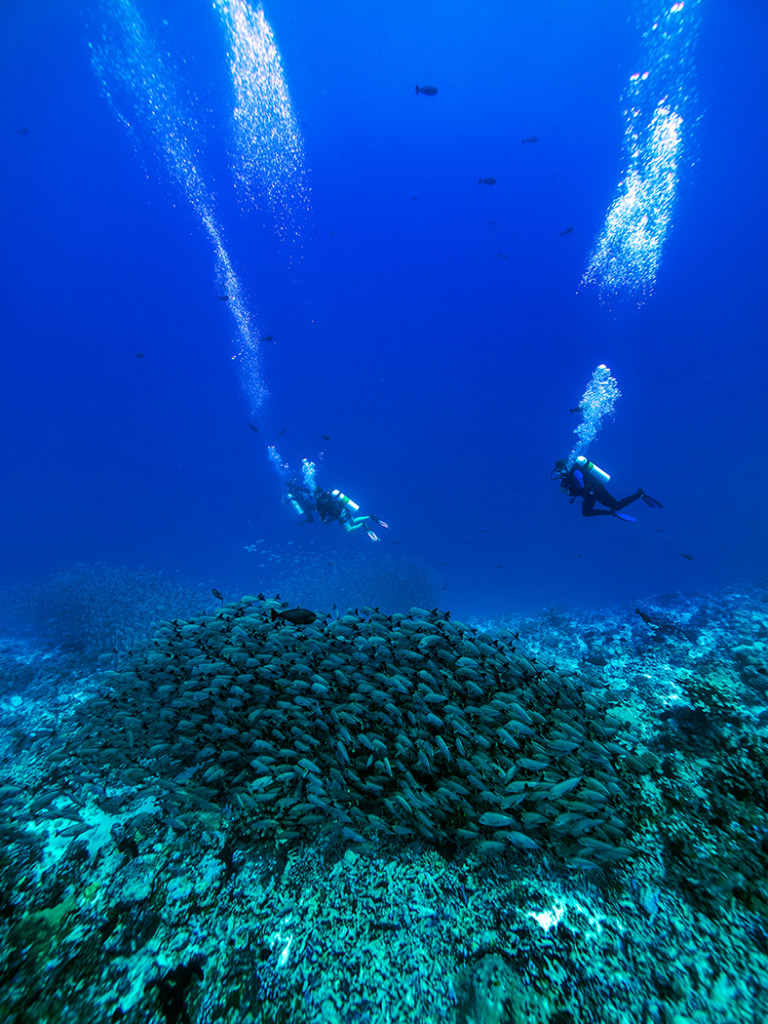
Diving, Rangiroa, school of snapper Olympus E-M1 7-14mm lens UW Housing
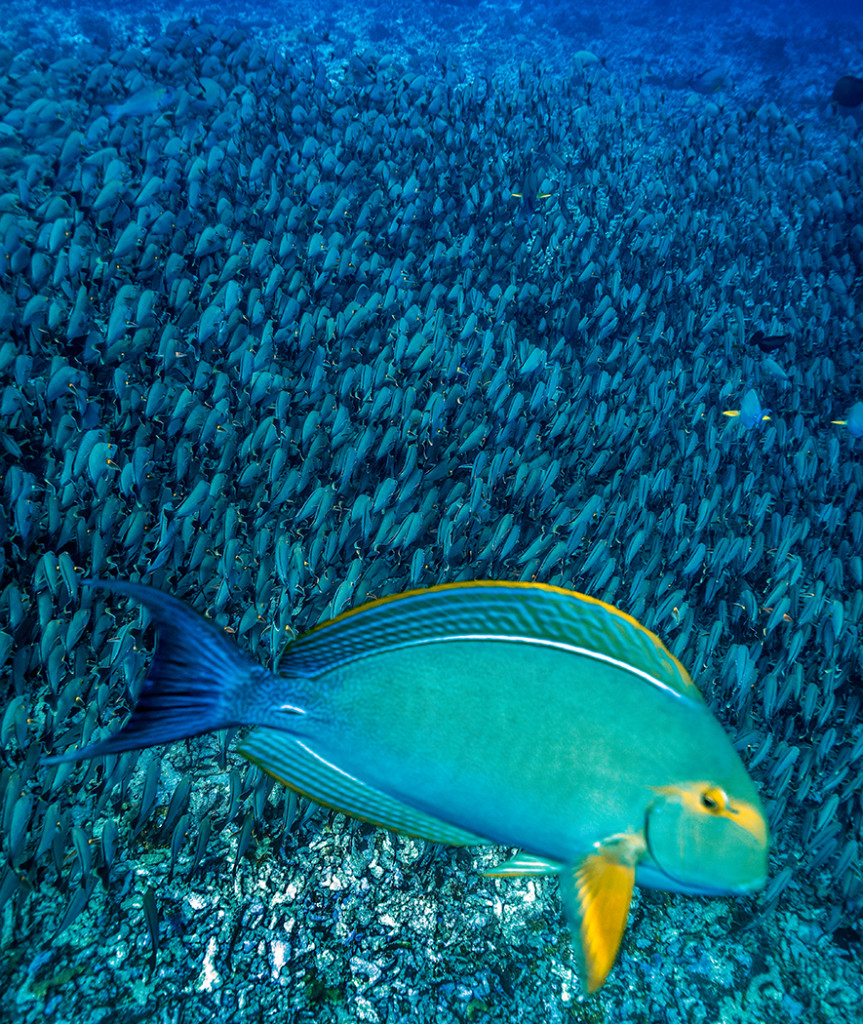
Diving at Rangiroa, while I was photographing a school of snapper, another fish “photo-bombed” the image Olympus E-M1 7-14mm Pro lens UW Housing
- When shooting underwater with a non-corrected port on the housing, or when shooting with most point and shoots, you actually “lose” the wide-angle capability of your lens due to water refraction, which “magnifies” the size of the image. If shooting macro work, then use a flat port, as it will magnify the image about 25%. Generally you don’t use a dome port for a macro…for one, you’ll probably bump the front of the port into what you are photographing. Zoom lenses less than 35mm at their widest should be behind dome ports.
- You can effectively photograph about 1/5th the distance you can see when taking still photos. All that particulate matter moving about in the water will be “frozen” when shooting stills, occluding the subjects further away from you. So, that water that has 50 feet of visibility, you can effectively photograph about 10 feet away before the subject starts to get blurry, or disappear in the snow of stuff in the water. This is another reason I like super wide lenses in a dome port underwater.
- Color balance can become strange the deeper you go. Remember, the deeper you go, the less red in the spectrum. This has to be dealt with by either software, compensating/adding warmth in deeper water photos, or by using flash to re-introduce that color.
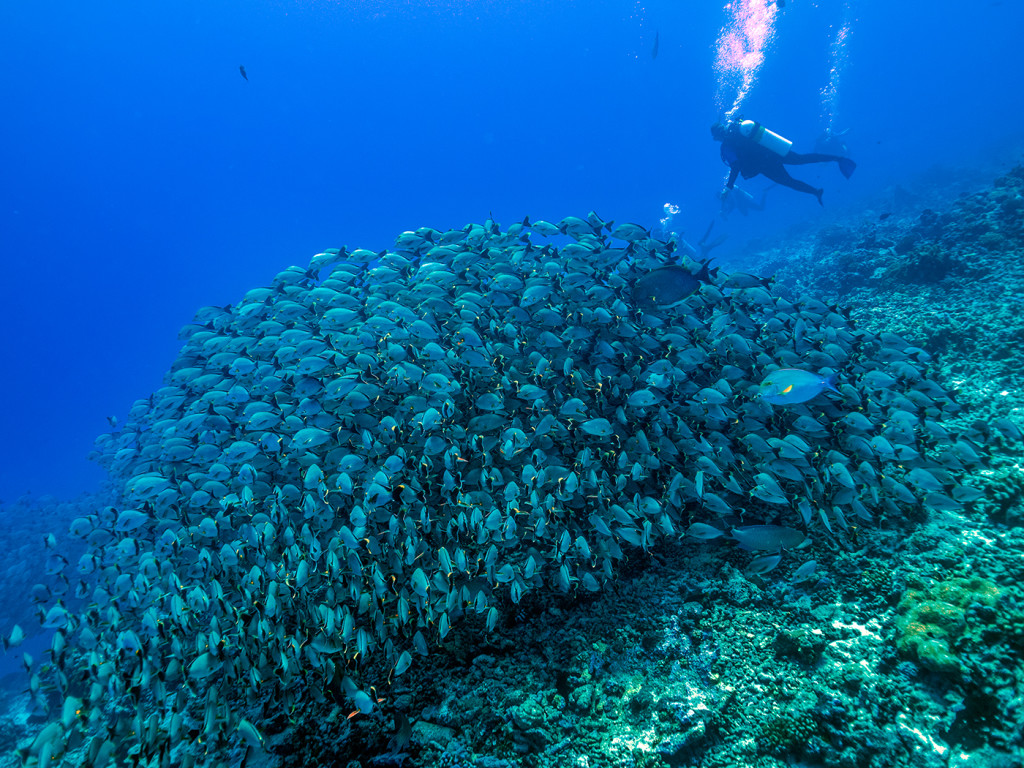
Diving on Rangiroa Atoll Olympus E-M1 7-14mm Pro lens UW Housing
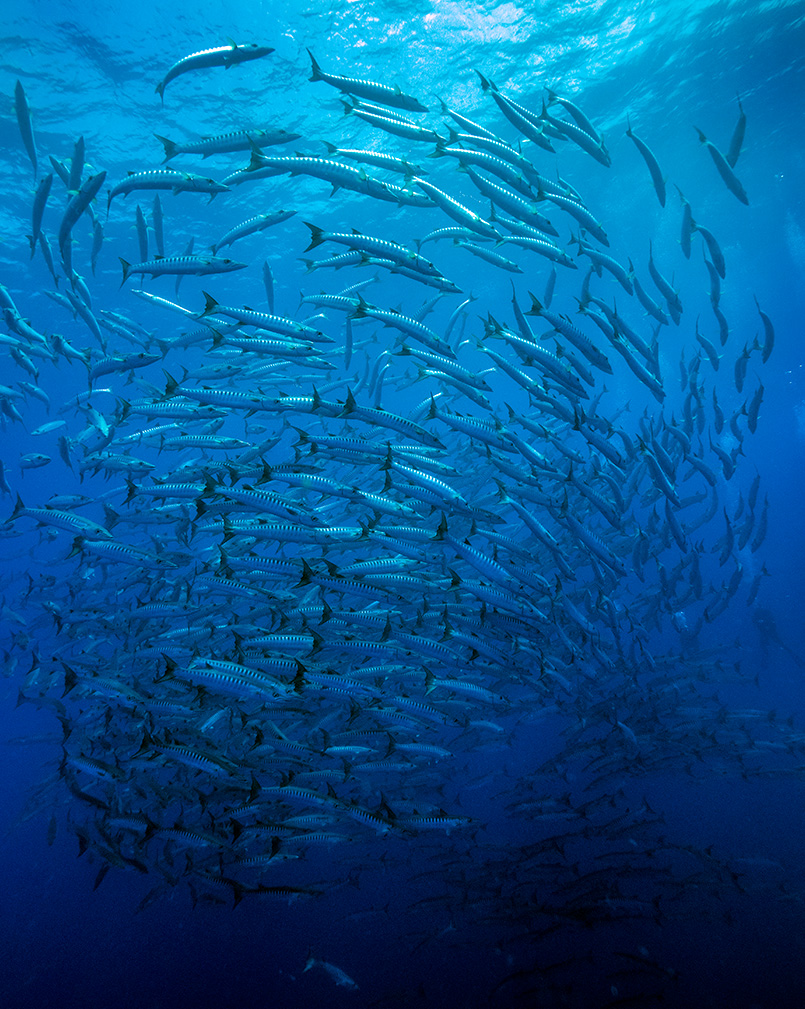
Diving on Rangiroa Atoll, a school of Barracuda Olympus E-M1 7-14mm Pro lens UW Housing



